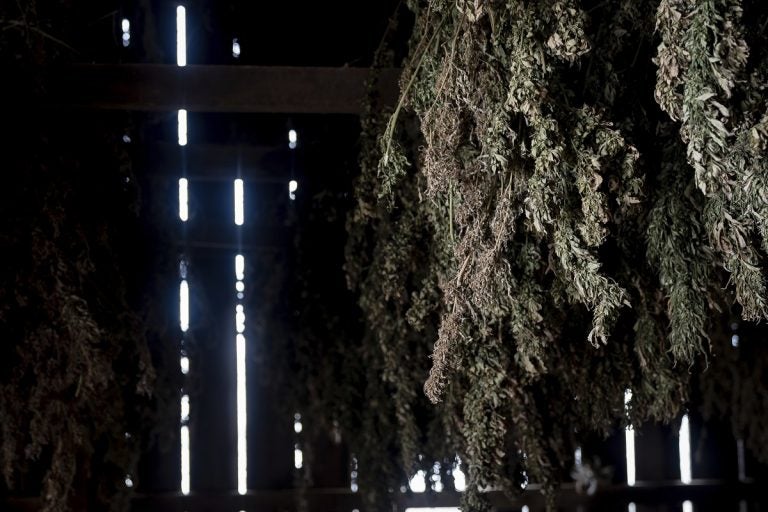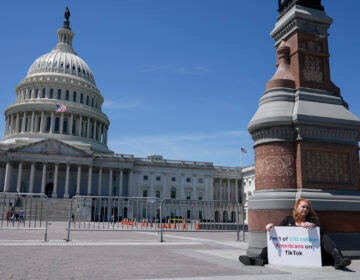Hemp looks like a bright spot for Pennsylvania’s farming advocates
Hemp was a common Pennsylvania crop before its designation as a Schedule 1 drug alongside marijuana more than 70 years ago.

Hemp plants hang to dry in a barn at Ananda Hemp in Cynthiana, Ky., Thursday, Jan 24, 2019. (Bryan Woolston/AP Photo)
Pennsylvania’s farming industry is changing. And the challenges — from falling dairy prices to young people leaving the industry because of climate change — were front and center at a recent Agriculture Department budget hearing before a state House committee.
But a more positive change also wormed its way into the discussion — the rise of industrial hemp.
Hemp is a non-psychoactive part of the cannabis plant, and President Donald Trump officially legalized it as part of the Farm Bill passed late last year.
Pennsylvania’s Agriculture Department had already been licensing growers on a research basis since 2017. Now, Secretary Russell Redding said the department is going full steam ahead to process applications.
“We’ve got north of a hundred applications,” he told lawmakers eager for new industries in their districts. “There are still some procedural pieces we’ve got to work through, but we’ve also submitted our operating plan…the second state in the nation to submit our plan to the U.S. Department of Agriculture.”
Some of those procedural pitfalls, he said, involve a complicated web of remaining restrictions on hemp products like CBD oil.
And he cautioned farmers, a lack of approved pesticides can make growing tricky.
“At this point, there is no chemical control, there’s no insect control, there’s nothing you can use on that plant,” he said. “You’re completely exposed to the threats with it.”
Hemp was a common Pennsylvania crop before its designation as a Schedule 1 drug alongside marijuana more than 70 years ago. It has traditionally been made into rope and cloth, and proponents of its use in modern manufacturing have touted its potential as a food product, an additive to cosmetics and a building material, among other things.
Redding said when the commonwealth began re-developing the industry in 2014 and started growing on a limited basis in 2017, there was a lot to learn.
“We had to sort of re-establish even the fundamentals of growing that crop in Pennsylvania,” he said.
The results so far, he said, “have been positive.” But then again, he added, “it’s only been two years.”
WHYY is your source for fact-based, in-depth journalism and information. As a nonprofit organization, we rely on financial support from readers like you. Please give today.





